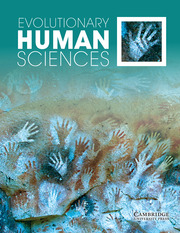No CrossRef data available.
Article contents
Breaking-up and breaking the norm: Intergenerational divorce transmission among two ethnolinguistic groups
Published online by Cambridge University Press: 18 February 2025
Abstract
Individuals who experience divorce in childhood are more likely to divorce themselves as adults. Notably, the magnitude of the intergenerational divorce transmission is stronger for groups among whom divorce is rare. This transmission may reflect differences in mating strategies passed from parent to child, or differences in cultural norms between groups. Sociologists and demographers have struggled to disentangle socioeconomic and cultural factors, because groups that are less wealthy also tend to have higher divorce rates. We use data from Finland, where two native ethnolinguistic groups with comparable socioeconomic characteristics - but different divorce risks - live side by side; Swedish speakers and Finnish speakers. Using register data on the entire Finnish population (N=554,337 couples 1987-2020), we examine separation risk as a function of parental divorce. Data suggest that the intergenerational transmission is greater among Swedish speakers, who have an overall lower separation rate. Group differences in separation risk persist even after controlling for socioeconomic factors and each partner’s experience of parental divorce. Notably, Finnish-speaking couples who reside in Swedish-dominated areas have both somewhat lower separation risk, and higher intergenerational transmission than their peers in Finnish-dominated areas. These results point to a cultural transmission of separation, beyond strong socioeconomic factors.
- Type
- Research Article
- Information
- Creative Commons
- This is an Open Access article, distributed under the terms of the Creative Commons Attribution licence (http://creativecommons.org/licenses/by/4.0), which permits unrestricted re-use, distribution and reproduction, provided the original article is properly cited.
- Copyright
- © The Author(s), 2025. Published by Cambridge University Press.


